7 Things About Austria You Should Know Before You Go (History, Culture, Politics and More)

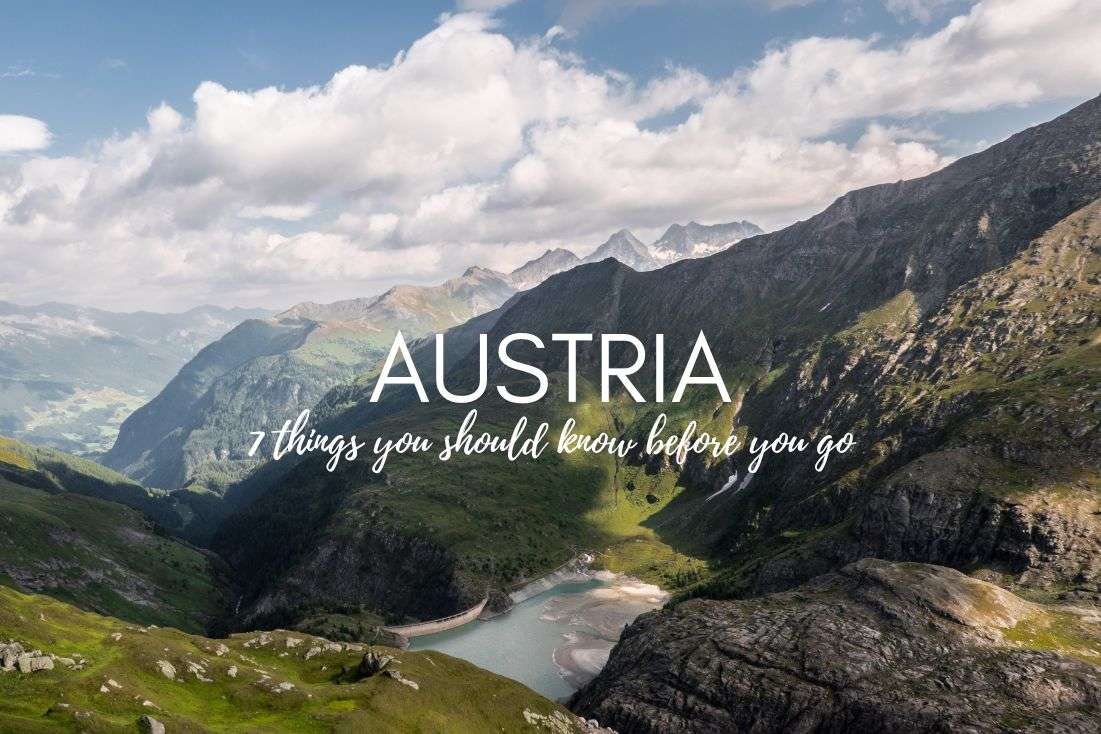
Austria is home to many famous people as well as beautiful nature and rich history. What should you know about Austria before you go? Well, there is a ton of things, but here is a crash course on the most important facts from geography to history, culture, religion, and economics. Get ready for the ultimate tour of Austria in 7 steps.
You might also be interested in reading:
- A Detailed 10-Day Austria Itinerary
- 3 Days in Vienna: The Ultimate Itinerary
- What is Austria Known For? 13 Tips and Tricks for Your Vacation
- 9 Unusual Things to do in Vienna
- 7 Top Tourist Cities in Austria: Highlights, Trips, Hotels, and More
1. Austria Geography
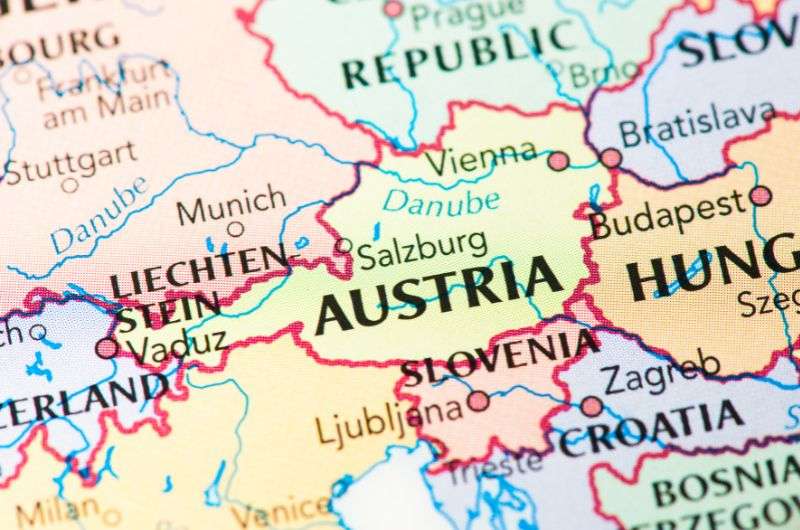
There it is!
First, a few information for dummies:
- Is Austria part of Germany? Nooo!
- Does Austria have a sea? It used to, in the times of the Habsburg Monarchy.
- What is the land like in Austria? The terrain is mostly mountainous, only 32% of the country is below 500 meters (1.640 ft).
Okay, elementary school sum up. Austria is a country in the south part of central Europe. It's bordered by eight states:
- Czech Republic
- Slovakia
- Hungary
- Slovenia
- Italy
- Switzerland
- Liechtenstein
Are you ready for more Austria geography facts?
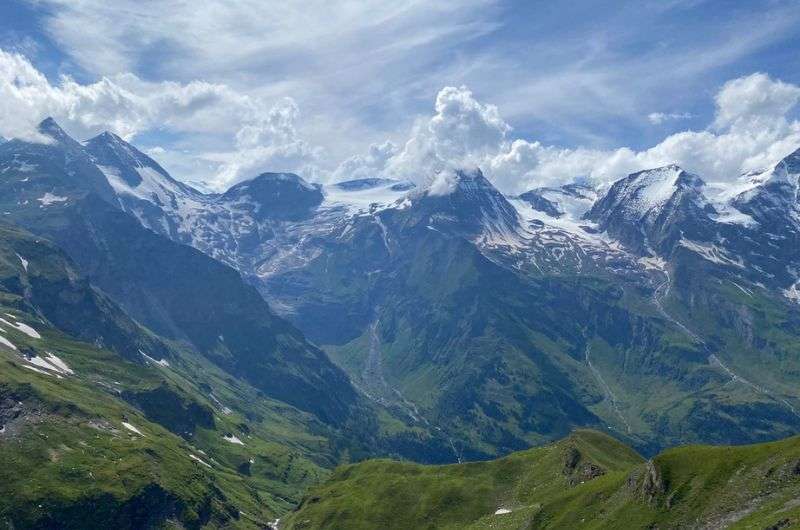
Austria boasts a unique mountain range
Austria has a total area of 83.879 square kilometers (32.383 sq mi). Nope, I won’t convert it into football fields. But if you’re really desperate, it’s approximately the same size as South Carolina or Portugal.
The capital of Austria is Vienna, and the highest point is the Grossglockner with a height of 3.798 m (12.460 ft).
Austria is overall characterized by mountains, lakes, and forests. Did you know that the Austrian Alps are more extensive than the Italian or French part? Well, it is, I guess Austrians are a bit megalomaniac.
That confirms another fact: this country has like a million and one lakes. So, I hope you understand I won’t write down all of them, just… try Google. As I said, they tend to think in the bigger picture, so they modestly call their lakes “see”. However, those of you, who read carefully won’t be confused, because you already know Austria has no sea.
The flowing kind of water is represented by six major rivers: Drau, Enns, Inn, Mur, Raab, and of course Danube (that’s the one from the most famous river song by Strauss).
2. Austria government and political system

The Parliament of Vienna
Austria is a democratic state with a federal republic system. That means there are nine states (Bundesländer in German) with extensive autonomy. Here’s the list of the states and their capitals, thank me later:
- Burgenland (Eisenstadt)
- Carinthia (Klagenfurt)
- Lower Austria (Sankt Pölten)
- Salzburg (Salzburg)
- Styria (Graz)
- Tyrol (Innsbruck)
- Upper Austria (Linz)
- Vienna (Vienna)
- Vorarlberg (Bregenz)
The government consists of a president, chancellor, and parliament. The parliament is divided into two chambers: Nationalrat (national council) and Bundesrat (federal council). The president is elected for six years directly by Austrian citizens and acts as the head of state and chief commander of the armed forces. The chancellor is the head of government (since the era of Metternich, a super cunning diplomat and chancellor, practically more powerful than the emperor himself). And to the top of all that, each of the nine states has its government with its governor.
Austria international memberships
Austria is a member of the United Nations and the European Union. Unlike many of its neighbors, it’s not a member of NATO. Because of the Austrian State Treaty from 1955, Austria is prohibited from any kind of military alliances and bound to neutrality. However, in 1995 Austria managed to get around this by conducting the PfP (Partnership for Peace), which allows active cooperation of NATO and Austria in the peace missions. I guess they finally made it to the light side of the force, after the misstep during the WWII.
What is the history behind the flag of Austria?
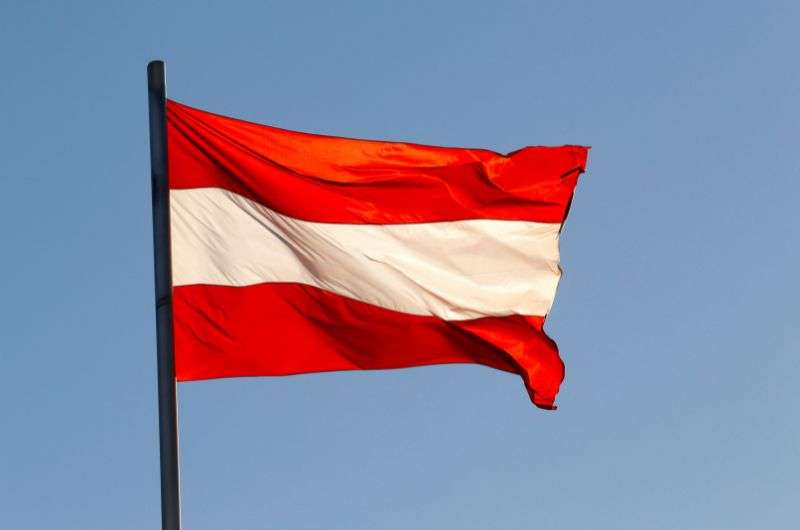
Flag of Austria
The Austrian flag has three horizontal stripes, two red and white in between. Sometimes, there’s an imperial eagle depicted in the center as reminder of Austria’s glorious history. There is a rumor about the flag origin, that bounds the birth of the flag to the Duke Leopold V who soaked his tunic in blood during the battle, but the middle part under his belt which remained white. Later, historians discarded this story as fake claiming that this flag pattern was not used until way after his death. Anyway, Austrians still believe that the red stripes demonstrate the strength and bravery and the central white stands for peace. By the way, the red, the white and the symbol of an eagle... doesn’t it remind you of something?
3. Austria economics
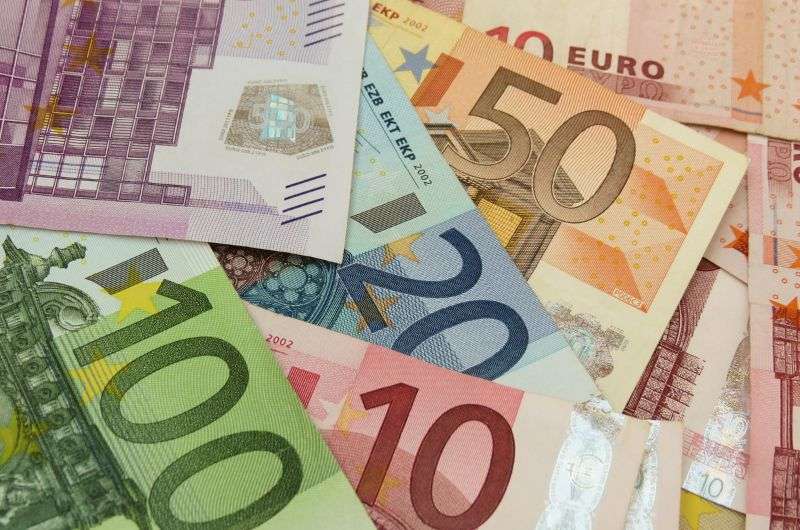
They are doing quite well in Austria
Although it has had its ups and downs since the collapse of the Austro-Hungarian monarchy, Austria is now a fully developed, industrialized country. According to the Global Finance Magazine, as of 2021, Austria is the 17th richest country in the world. To give you an idea, that's a higher rank than the United Kingdom, Germany, Sweden, or even Canada. Besides that, Austria consistently ranks as number one country to live in.
The most important industries for Austria are food, tourism, mechanical engineering, steel construction, vehicle manufacturing, and high-quality arts and crafts. Austria is one of the European leaders concerning organic farming. A significant portion of the GDP is also brought by manufacturing. Austrians are in fact pioneers in iron and steel production. The steelmaking innovation from Austria is now used all over the world under license. And if all of that is too complicated for you, let me name a few world-known Austrian brands: Red Bull, Swarovski, OMV Group, Raiffeisen Bank, or Strabag.
4. Austria history summary
Explaining the whole history of Austria would be like explaining the history of the world. So, if you feel exceptionally nerdy today, I have two movie tips for you:
1) Woman in Gold: Great story of “Austrian Mona Lisa” and Helen Mirren trying to get her family heirloom back.
2) A Dangerous Method: Captivating piece exploring the collaboration of Sigmund Freud and Carl Jung. Learn about Austrian history and the birth of psychoanalysis.
And back to history, here's a brief outline of how it went from Hallstatt culture to the Holy Roman Empire to geburtsort of the biggest villain in history...and so on.
The early settlements and Hallstatt culture
Europe is called the old continent for a reason and Austria being part of it, its history goes way back. The first archaeological proof of settlement dates back to the Paleolithic Age (around 8.000 BC). The Danube valley and the mountain's shelter provided a perfect environment for early settlements, such as Neolithic Hallstatt culture (see the picture below for the contemporary Hallstatt culture). And then, there were also the areas rich in salt and iron deposits. So, around 200 BC a Celtic state called Noricum emerged in this area. Later, when Romans found out about the quality of Noric steel it was subjected to the Roman Empire.
Europe is called the old continent for a reason and Austria being part of it, its history goes way back to the Paleolithic Age (around 8.000 BC). When most people just ran after the mammoths, the guys in Salzkammergut were already mining salt, giving birth to Neolithic Hallstatt culture (see the picture below for the contemporary Hallstatt culture). And because humans always need to not only eat, but also fight, the Celts quickly came up with iron mines and industry. The kingdom of Noricum had great blacksmiths for sure, but not so much of the strategists. When Romans found out about the quality of Noric steel it was subjected to the Roman Empire.
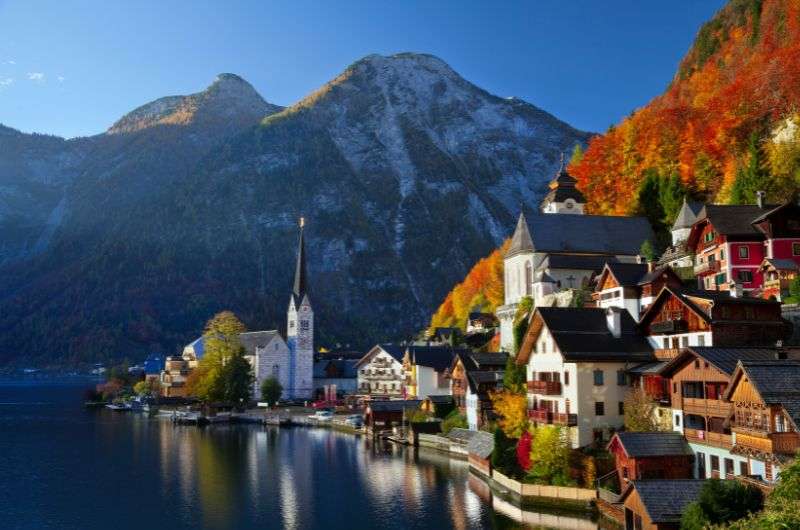
Hallstatt was worth fighting for! I mean...look at the beautiful city!
Roman impact and the birth of Austria
Roman rule, however, was not so bad for Austria as they improved the infrastructure and established many settlements. A city of Vindabona (today's Vienna) among them. During the following centuries, the area served as a crossroad for many tribes from Germans to Avars and even Slavs
Around 800 AD, this French guy Charlemagne, included the Danube valley area into the Carolingian Empire as Eastern Kingdom (referred to as Ostarrichi—later transformed to Österreich, as the German speakers call it nowadays). In these times, Austria served as a kind of bumper to stop the Avars from further advancing west and the region was gradually Christianized by Irish and Scottish monks.
The Middle Ages and the birth of the Habsburg dynasty
By the year 976 Austria was entrusted to the Bavarian house of Babenbergs, who significantly enhanced the wealth of the region by crusades and trading. Later in 1156, Austria received the status of the duchy and gained important privileges along with it. The expansion of power called for some kind of befitting residence. For that very reason, duke Henry II moved the palace to Vienna in the 12th century and built a Cathedral of Saint Stephen there to show the prominence of the city. Following the brief rule of Czech Přemyslid king Otakar II, Austria finally ended up in the Habsburg hands of Rudolph I who beat Otakar II in the Battle of the Marchfeld in 1278, marking the start of Habsburg 600 years long reign over Austria, and by extension the whole central Europe.
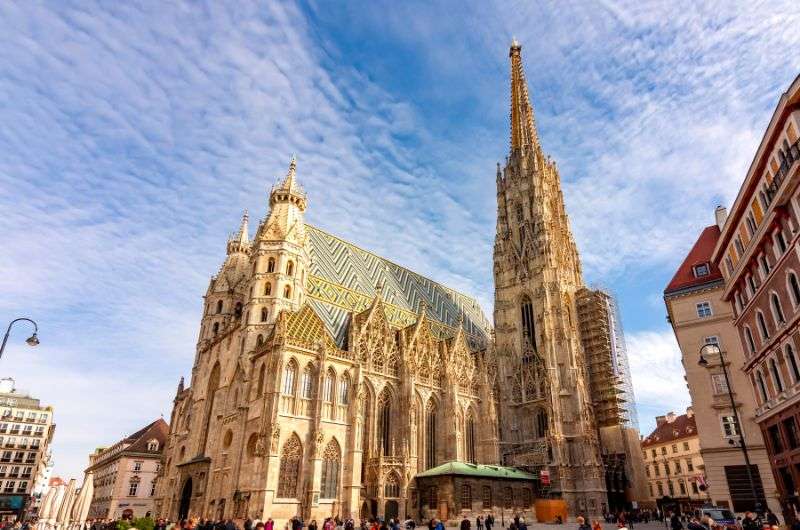
St. Stephan’s Cathedral in Vienna
For following several centuries, people were fighting in the crusades, murdering heretics and “trading” (mostly staling from other countries) and Austria grew up on importance as well as wealth. And what do you do, when you’re rich and you want everybody to know it? Yeah, today you would buy a nice island somewhere. Back then people were building cathedrals. The one in Vienna, the Cathedral of Saint Stephen (in the image below), has stood there as a symbol of importance for more than 8 centuries.
The dukes in central Europe were like boys on a playground, fighting for power. I won’t bore you with details on all the names, just need to emphasize, that shortly, there was also a Czech king on the Austrian throne—Přemysl Otakar II. Unfortunately, he was killed in the battle in 1278, the Habsburgs came to power, and they didn’t want to lose their grip for 600 years. They finally did, just after losing many many Czcech soldiers in WWI.
The centuries of blood in Modern Age
In the following centuries, the Habsburg dynasty managed to grow in power and expand their territories, mostly thanks to convenient marriages. Nonetheless, as the empire grew, the Habsburgs couldn’t avoid the wars and bloodshed. Thanks to the marital bonds, childless marriages, and a number of unfortunate deaths, Habsburgs inherited Burgundy, Netherlands, Spain, and later even Bohemia and Hungary (also convenient, don’t you think?). In 1522, the Habsburg dynasty split into the Austrian and Spanish lines, controlling half of Europe! In the following years, the dynasty was forced to face the Ottoman attacks (some of them even managed to get to the gates of Vienna), but they also incited some of the conflicts themselves.
A brief summary of the following years of the Habsburg dynasty:
- Crushing protestant reformation and the rise of the infamous Spanish Inquisition in the 15th century.
- Spanish conquest to Mexico and Peru in the 16th century: Francisco Pizzaro conquered the Incan Empire and Hernán Cortés took the Aztec Empire.
- The plague epidemics and the Thirty-years' war in the 17th century.
- The following Turk attacks on the Holy Roman Empire at the end of 17 century.
Long story short, Austria was entangled in plenty of bloody affairs, many of them initialized by the Habsburgs themselves. And then there was the era of reformations.
The era of enlightenment and the baroque heyday
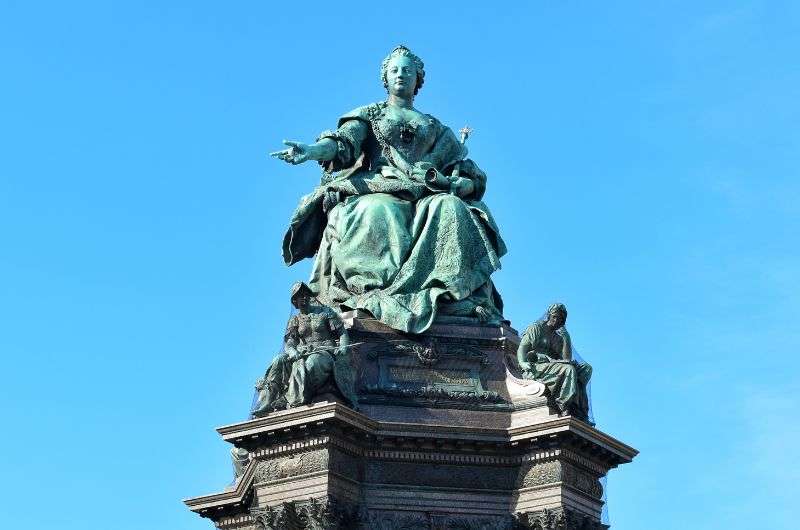
The era of Maria Theresa
The 18th century represented the time of enlightened reforms and monumental baroque buildings (such as Schönbrunn Palace, half of Vienna, and the whole of Salzburg). Empress Maria Theresa is known as the key figure of 18th-century politics. Sometimes called the “Europe’s Mother-in-Law” due to numerous marriages of her numerous children to prominent European courts, she also managed to pull out the empire from the dark ages. Mostly with her reforms of the education, church, and lands.
Her son, Joseph II, followed in his mother’s footsteps and continued the reformative endeavors. Joseph II abolished the serfdom in the empire as well as the death penalty and provided some religious freedom to Protestants and Jews.
The Napoleonic Wars mark the end of the Holy Roman Empire
The Napoleonic wars turned out to be devastating for the Holy Roman Empire (we’re still talking about Austria) led by Francis II at the time. Austria was defeated at several battles and in the aftermath of the crushing defeat at the Battle of Austerlitz, Francis II declared the dissolution of the Holy Roman Empire in 1806 and abdicated. After the further loss of lands due to the formation of the Italian state, Habsburgs proved the last effort to maintain power in central Europe by forming the dual monarchy of Austria-Hungary in 1867.
The Austrian fairytale: Franz Joseph I and “Sisi”
The 68-years-long reign of Emperor Franz Joseph I was rather ambivalent. On one hand, he represented the absolute imperial power and oppression of the different national groups (ask some of the Czechs on that matter). The Empire also experienced kind of a clinical death during his reign, with bad foreign policy and economic situation Franz Joseph wasn’t exactly the best leader the empire could ask for.
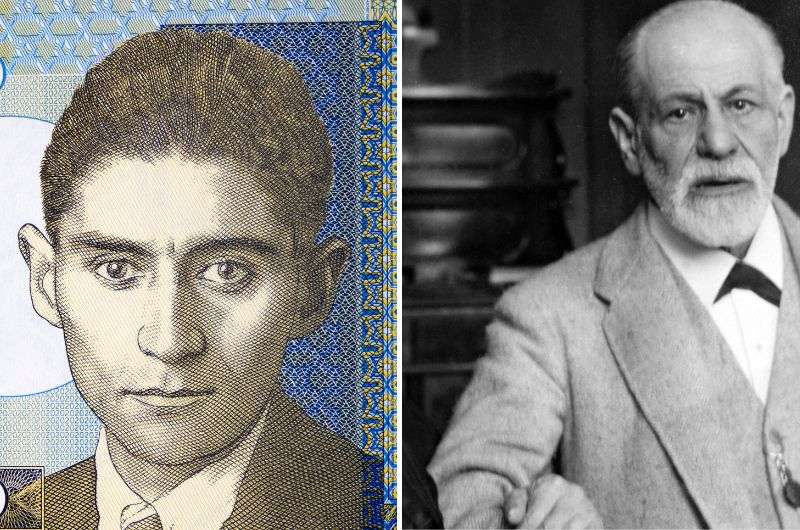
Franz Kafka on the left and Sigmund Freud on the right—the well-known personalities of Austria
On the other hand, during his reign, the monarchy became the center of culture and industry. Vienna was a pivotal point in European cultural life. There are just a few big names from Austria-Hungary:
- Johann Strauss: composer, known mainly as the “King of Waltz”
- Sigmund Freud: father of psychoanalysis
- Gustav Klimt: the main figure of the Art Nouveau movement (around 1900)
- Franz Kafka: one of the major novelists of the 20th century, born in Prague, Austria-Hungary
This peaceful fairytale was not to last for long though. In June 1914, the archduke Franz Ferdinand, the heir to the throne, was assassinated in Sarajevo and the World War was about to break out.
The turbulent times of the 20th century
The monarchy stumbled its way through the World War (a little did the people know it would only be the first one). But Emperor Franz Joseph died in 1916 and the 640-year long Habsburg reign with him. In 1918, the First Republic of Austria was established facing the consequences of the collapse of Austria-Hungary, inflation, and unemployment. Followed by the Great Depression in the 1930s, Austria awaited another disaster.
On March 12, 1938, German troops seized the land during the so-called Anschluss (annexation). The not-so-funny fact is, that Austrians greeted Hitler with enthusiasm, as they believed he would bring the unification of German-speaking countries and would help to improve the economy of Austria. And... everyone knows what happened next.

Picture of soldiers from World War II
Funny fact: Although Hitler is known as the “German devil”, he was in fact an Austrian born in Braunau am Inn in Upper Austria. Later he immigrated to Germany and renounced his Austrian citizenship in 1925. In Czech, there is a saying that the biggest Austrian marketing achievement was to convince the world that Hitler was German, and Beethoven was Austrian.
The aftermath of World War II and Austrian neutrality
After World War II, Austria was occupied by the victorious allies for a decade divided into four sections:
1) French got the Vorarlberg and North Tyrol
2) The USA controlled the Salzburg and Upper Austria
3) East Tyrol, Carinthia, and Styria were in the British Zone
4) Soviets stayed in Burgenland and along the north border with Czechoslovakia
The historical city of Vienna was declared an international zone and the forces switched control there every month.
Finally, in 1955, the Austrian State Treaty passed in the parliament stating Austrian Neutrality and Austria gained its sovereignty once again. In the same year, it became a member of the United Nations. From there on, Austria worked as hard to level up as Arnold Schwarzenegger. And they both made it. Him to be the governor and Austria to be one of the richest and most economically stable country in Europe.
And if you managed to read through to this point, here’s a funny and educative video as a reward:
5. Religion in Austria

The Cathedral of Salzburg
The foundation of religious freedom laid by Joseph II in the Edict of Toleration from 1781, completed by the European Convention on Human Rights of 1950 secured the freedom of all religious groups in Austria.
Around 50% of Austrians profess to be of a Roman Catholic faith followed by a large number of atheists (about 23% of the population). Then there are Protestants with 3,8%, Muslims with 8%, Eastern Orthodox with 9%, and Jewish holding 0.3%.
6. Culture of Austria

Almabtrieb— a celebration dedicated to cows
Austrian traditional culture is derived from the catholic religion. Traditional folklore is becoming more and more popular even among young people. As a result, prepare yourself to see people wearing traditional dress everywhere on every occasion. That includes Dirndl (traditional women’s dress and Lederhosen (leather shorts worn by men). Generally, Austria shares most of its traditions and culture with other German-speaking countries (Germany and Switzerland).
Austrian food is typically represented by the Wienerschnitzel, Bratwurst, and Sachertorte. However, remember the Habsburg empire? Thanks to centuries of Holy Roman Empire, there are many foreign influences from the former states, such as Czech, Hungarian or Italian. So, when in Austria, you have a wide range of cuisines to choose from.
The main meal of the day is lunch, traditionally of three courses: soup, meat with dumplings or potatoes, and dessert. Austrians also like to have a break after lunch, in the company of friends at the café, and some snacks and cakes.
Tip: When you’re at lunch with native speakers, you can say “Mahlzeit!” before you start eating. It literally means “blessed mealtime” and in Austria, it’s something like “Bon appétit” in France. And when you go for a drink or two, you can toast with “Prost!” meaning simply: cheers. And don’t forget to make eye contact before you toast with someone.
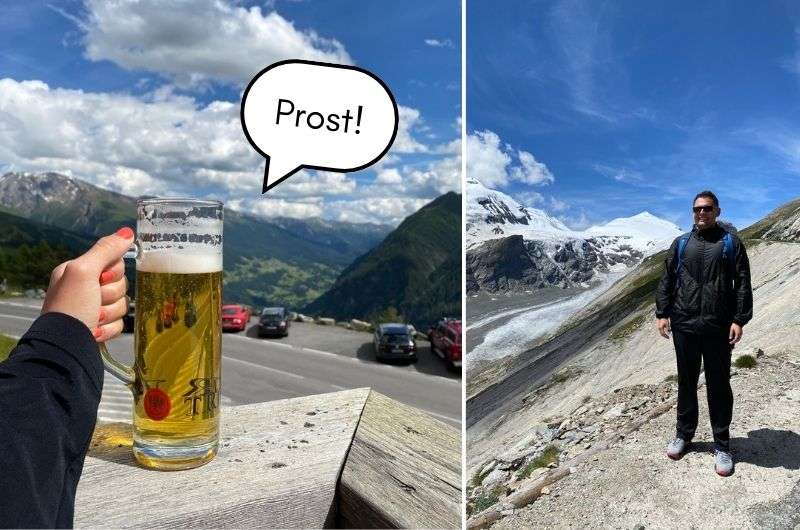
We really enjoyed our time in Austria!
Austria is also famous for various festivals and celebrations. Here’s a list of the most popular:
- Salzburger Festspiele (July to September): Salzburg Festival celebrates the legacy of Wolfgang Amadeus Mozart, the most famous Salzburger, with musical and dramatic performances.
- Almabtrieb—The fall cow train (October): This tradition takes place in Alpine regions usually around October, when all the cows are brought from pastures to the stables in the valleys. The cows are usually richly decorated with flowers and the “cow train” is accompanied by music and dance.
- Krampuslauf (December 5 to December 6): The terrific devils‘ parade through the town, which startles even the adults and takes place annually in the Tyrol cities.
- Christmas Markets (November to December): I think this one is self-explanatory, just drink the hot wine (glühwein) and get some gingerbread (lebkuchen).
7. People of Austria
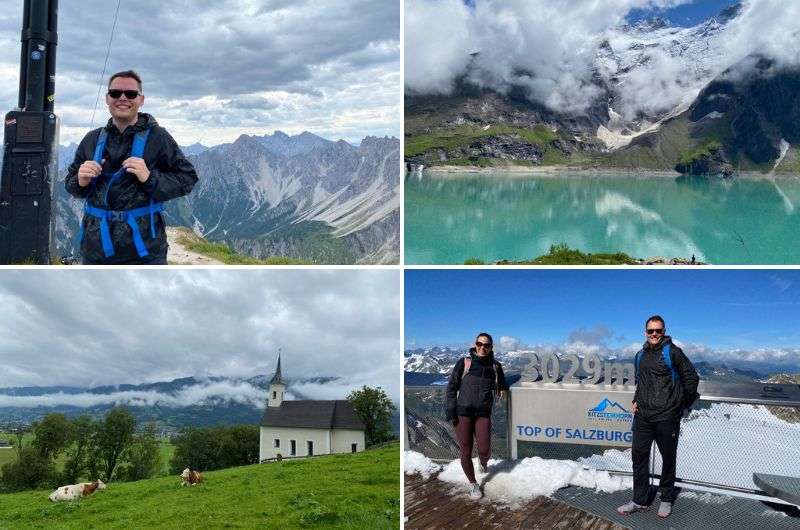
Pack up your things and go to Austria!
Austria is growing more and more multicultural thanks to immigrants from all over the world. But considering its past, there are also many minorities from former imperial states (Czech, Serbs, Italian, Polish, and others). The vast majority of people speak German as well as English, which is taught in all schools as a second language.
Austrian people also love to be outdoors, either in summer hiking or in winter skiing. They are active in many sports and the most popular is soccer, volleyball or basketball.
Most of the natives (at least from my experience) are always friendly and happy to help with anything. But they love punctuality and fairness. So, for your own sake, be everywhere five minutes earlier, rather than later. Another thing you should know before you mingle is that their sense of humor might be a little intimidating as they tend to be a bit sarcastic or edgy… just don’t take it personally.
Austria also takes pride in many famous people born there. Here is a list of the most famous Austrians:
- Wolfgang Amadeus Mozart (central character in Amadeus directed by Czech expat Miloš Forman)
- Franz Schubert (another famous composer)
- Sigmund Freud (the one who thought mothers and—disturbingly—sex are the sources of all problems)
- Erwin Schrödinger (the one with a half-dead cat in a box)
- Gustav Klimt (remember the movie with Helen Mirren I talked about earlier?)
- Arnold Schwarzenegger (yep, the former governor of California was born in Austria)
- Niki Lauda (three-time F1 World Champion)
- Robert Musil (the author of The Man Without Qualities masterpiece)
- Ferdinand Porsche (yes, the fancy car brand)
- Karl Popper (most famous for his Paradox of Tolerance)
- Christoph Waltz (you know this guy if you’re a Tarantino fan)
- Conchita Wurst (the famous Eurovision bearded singer)
This post contains affiliate links. I earn a small commission if you make bookings through my links, at no additional cost to you. This helps keep this blog free, thank you!



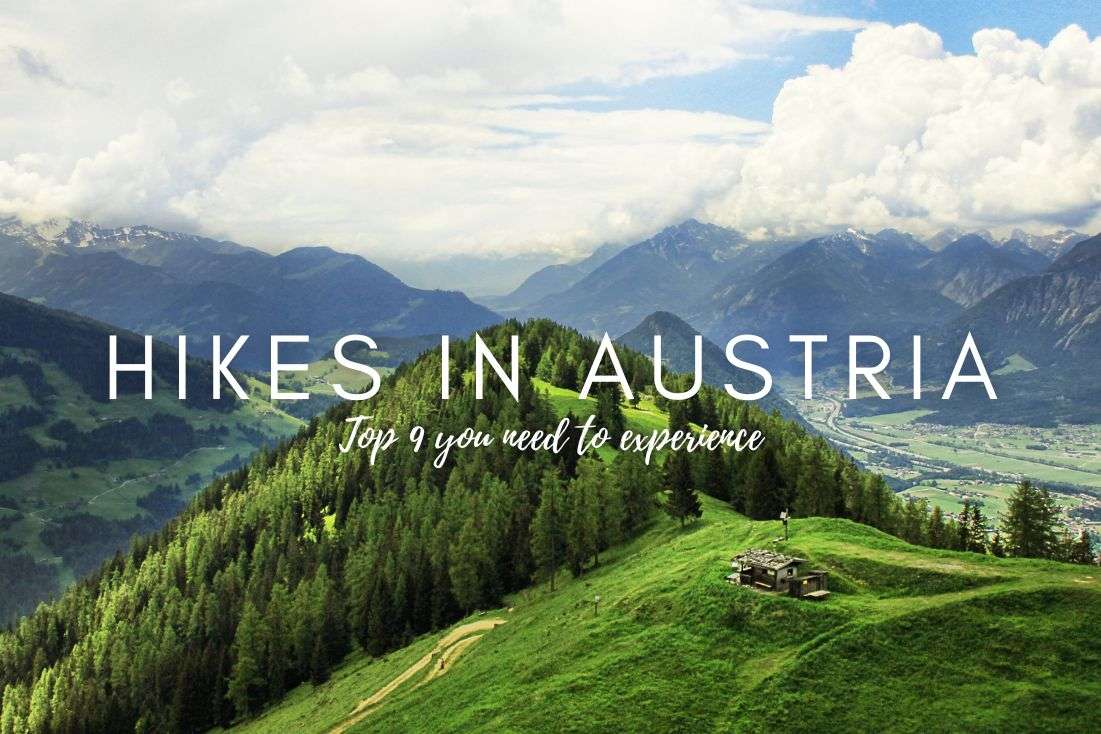
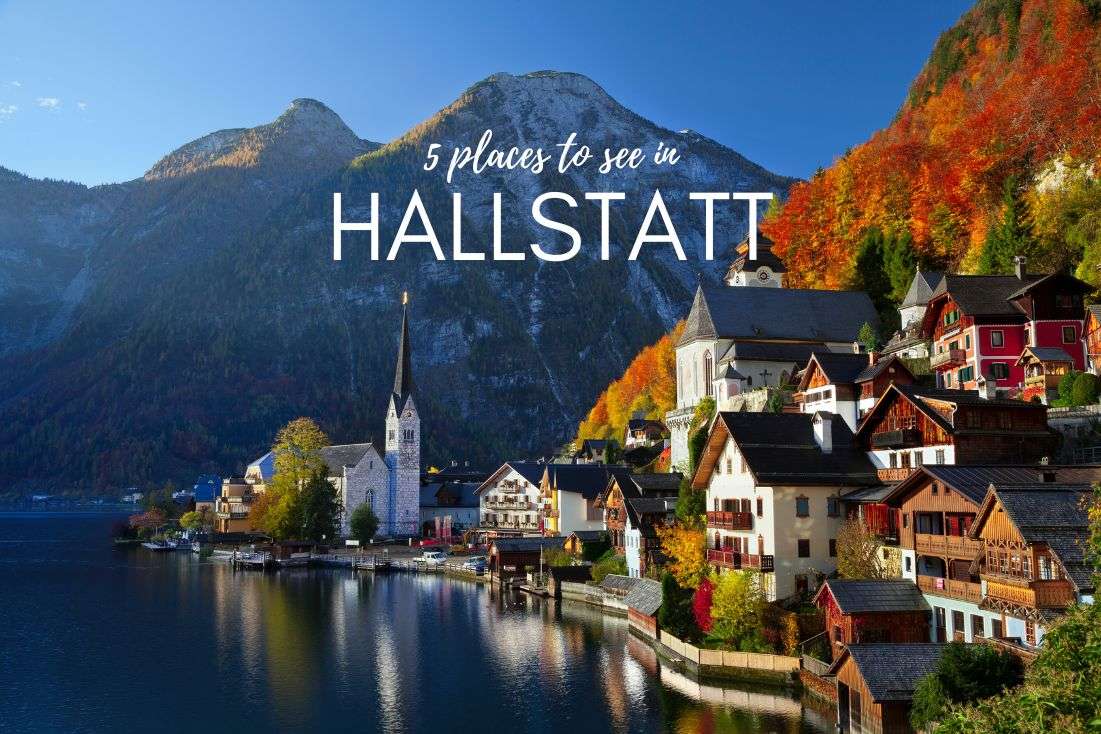





Comments | Thoughts? Give us a shout!